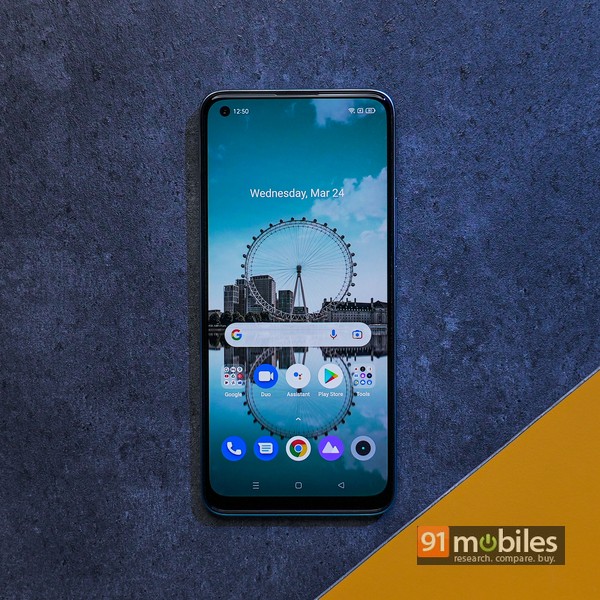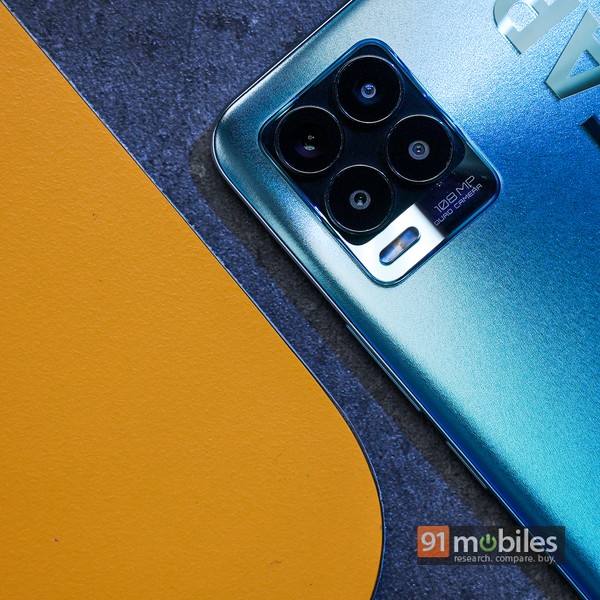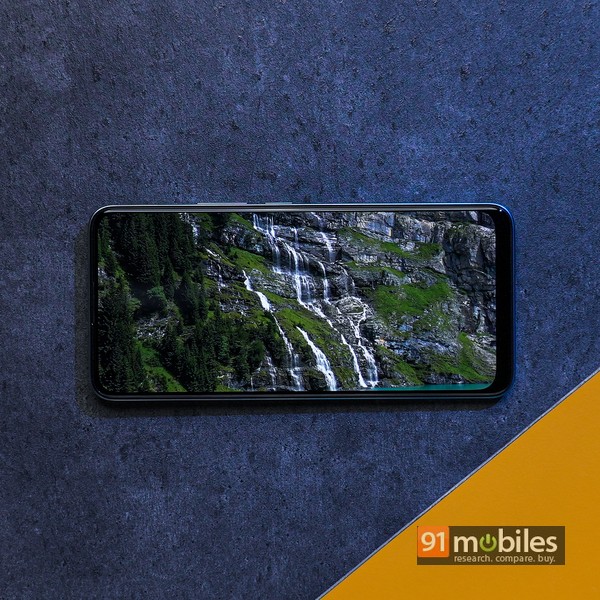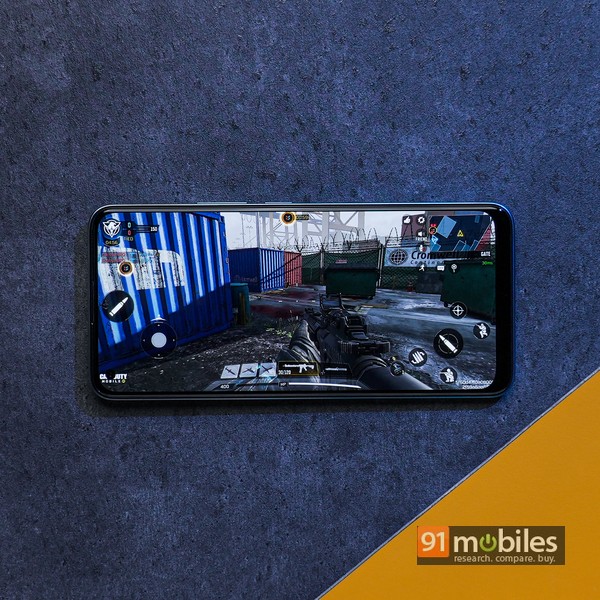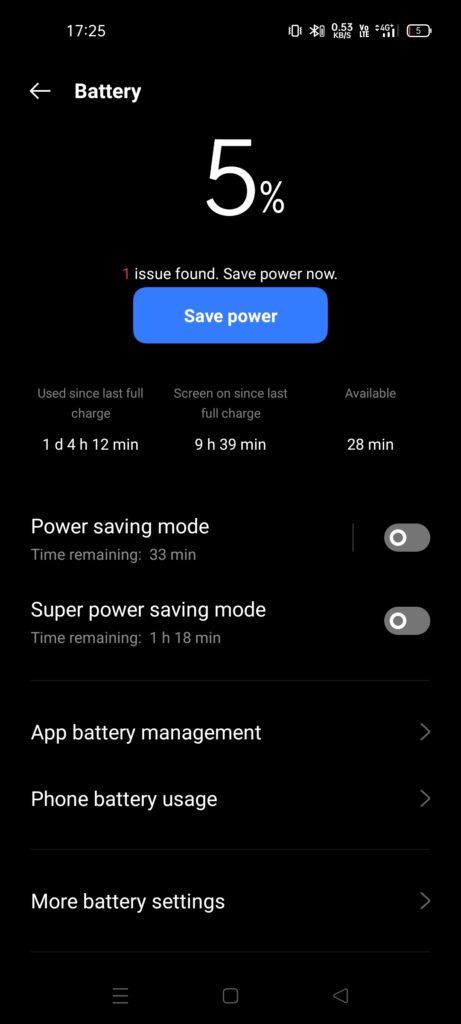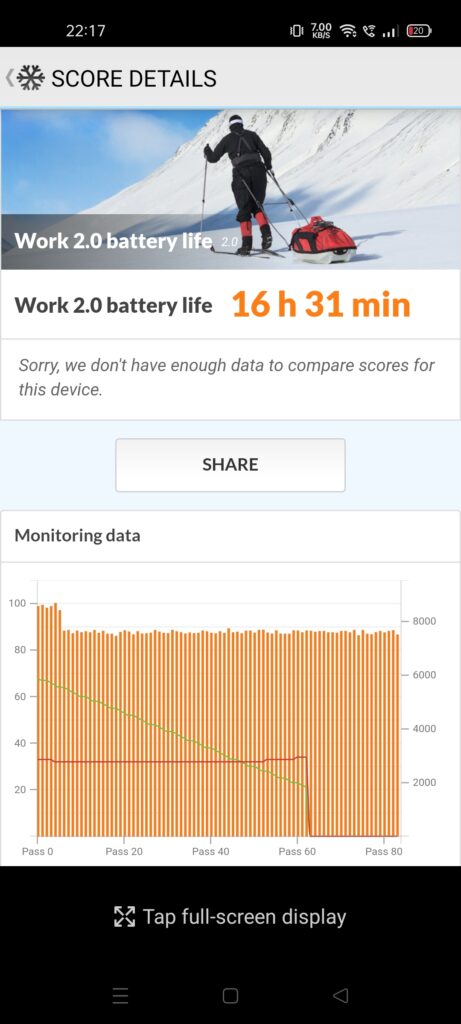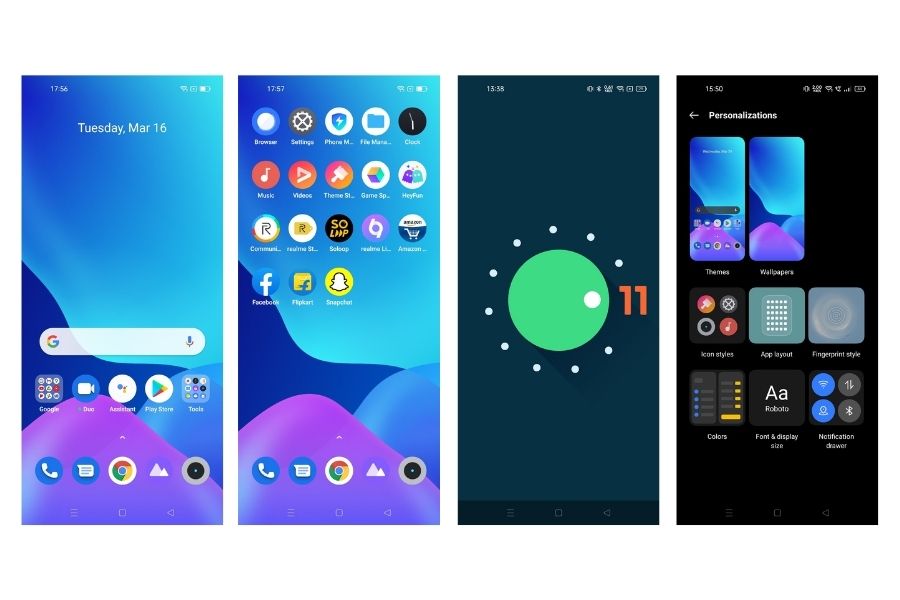Review Summary
Expert Rating
Back in 2016-2017, Samsung’s smartphone strategy seemed like a spray-and-pray approach. In other words, the brand would launch multiple smartphones at similar price points with the expectation that some of them would catch consumer attention. While the Korean giant has changed its ways since 2019 – for the better, if we may add – it seems that another company is following its footsteps. No prizes for guessing this one – it’s Realme.
OPPO’s offshoot brand took a slow-and-steady approach when it launched its first smartphone back in May 2018. But now it’s in top gear as not even a single month goes by without us seeing a new phone from the brand. In fact, in less than three months of 2021, Realme has introduced no less than eight phones (including RAM / storage variants). Two more devices are being added to that list now as it has taken the curtains off the latest models from its mainstay number series – the Realme 8 and Realme 8 Pro. This review would be focusing on the Pro edition. Will Realme end up going Samsung’s way, or will it be able to sustain its spate of launches to keep the prospective buyers hooked? Let’s find out today in the Realme 8 Pro review.
Verdict
We don’t need to make a case for purchasing a Realme phone anymore. What we mean is that if you’re a value-conscious buyer, then the Realme 8 Pro deserves all your attention, and rightfully so. It scores high on all the important aspects – right from display to performance, and of course, its cameras, which is its raison d’être… all thanks to its 108MP primary sensor. It’s evident that Realme is banking on the device’s camera capabilities to make it stand out not just from the competition, but also from its own smartphones, namely the Realme X7 (review) and Realme Narzo 30 Pro (review).
However, if you aren’t a photography enthusiast, or aren’t chasing pure numbers (since megapixel count is just one aspect of photography), then you might want to look for the other options. Especially, the newly-launched Redmi Note 10 Pro Max (review) or soon-to-be-launched POCO X3 Pro.
Cameras
Since photography is Realme 8 Pro’s claim to fame, let’s begin the review with that. The quad-camera on the handset comprises a 108MP Samsung HM2 f/1.88 sensor, an 8MP f/2.25 ultra-wide snapper, a 2MP f/2.4 black and white portrait lens, and a 2MP f/2.4 macro shooter. In short, the device should be able to capture all sorts of scenarios. On to the front, you get a 16MP f/2.45 sensor, which promises a good video calling experience… something which has become quite important in the WFH era.
The camera UI on the handset is user-friendly despite the fact that it offers a bunch of features. If you’ve used Realme smartphones before, you’ll feel right at home. In the vertical orientation, you’ll find various toggles along with the settings icon up top, while various photo / video modes can be found at the bottom. Google Lens is also built-in natively, and going to the More tab will bring up advanced options such as Dual-View video, Ultra macro, AI Mixed Portrait, etc.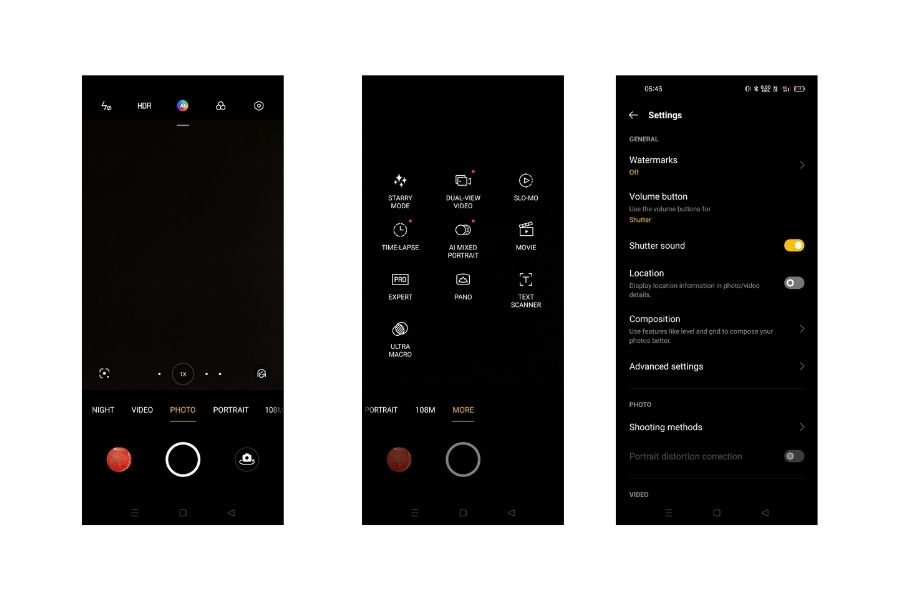
The Realme 8 Pro ranks among the top as the best camera phone under Rs 20k. That’s because it can offer impressive details and vibrant output in all scenarios, be it landscapes or close-ups. Do note that the colours come out saturated, which makes the shots look pleasing to the eyes, but doesn’t show natural colours. In fact, we’d suggest that you should turn on the AI selectively as that boosts the colours on the photos even further. The 108MP ISOCELL Plus sensor measuring 1/1.52-inch does shoot nice-looking pictures, plus you get 3x in-sensor zoom… which is technically different from optical zoom, but offers good quality. We noticed that 108MP captures take a bit longer to process, so you can’t use them in situations you want quick results. We do love the night mode on the smartphone as it manages to offer sharp output even in dim settings, and gets the advantage of 9-in-1 pixel binning (since the output is 12MP from a 108MP sensor). Take a dekko at the Realme 8 Pro camera samples to gauge its prowess yourself.
As far as the videos are concerned, the 8 Pro can go up to 4k recording at 60fps. The slow-mo capture is capped at 960fps. Realme also highlights the Starry mode and Tilt-shift mode (when used well, it gives you an impression that you’re looking at a miniature landscape) in the video department. Selfies are impressive too, though they turn out grainy in low light.
Design and display
Realme touts that the 8 Pro is among the slimmest and lightest phones around, and we have to agree. With a frame measuring 8.1mm, it’s quite thin and you can hold it for a longer duration too, as it tips the scales at just 176g. The phone has a curved rear panel with a matte-like finish, which the company calls the AG-crystal process. In this case, the back of the phone sports a texture of mineral crystals. The device is available in three colour options of blue, black, and yellow.
The best part is that Realme hasn’t followed the “bigger is better” herd and kept the dimensions of the device in check. The smartphone comes with a 6.4-inch screen, and that means you can use it with a single hand quite comfortably. The fascia of the smartphone is dominated by the display itself, though there’s a noticeable chin at the bottom… which can be a sore sight. The punch hole however, doesn’t take away from the immersive experience offered by the 1080p panel. I particularly enjoyed watching movies on the smartphone.
The button and port placement are standard, and you do get a 3.5mm headphone socket as well (thankfully). Sadly, when you see the rear of the 8 Pro, it doesn’t come across as a premium-looking device. And I’m not even talking about the quad-camera array that protrudes from the body. It’s the in-your-face “Dare to Leap” slogan that doesn’t add any value and looks rather ugly, for the lack of a better word. Moreover, while the phone’s design language dubbed “Infinite Bold” sounds good on paper, it doesn’t translate well in real life. While holding the phone, I was always afraid that it’ll slip from my hands. That’s why I’m glad that the brand ships a transparent protective cover in the box.
Hardware and software
This is a section that makes us question why did Realme launch this smartphone. You see, the Realme X7 and X7 Pro (review) came with the new MediaTek Dimensity chipsets, and the same was the case for the Narzo 30 Pro. Realme’s arch-rival Xiaomi launched the Redmi Note 10 trio, with the top-end Note 10 Pro Max (review) featuring Snapdragon 732G. The all-new Realme 8 Pro, on the other hand, utilises Qualcomm’s Snapdragon 720G. Don’t get us wrong. The octa-core processor with two 2.3GHz high-performance cores and six 1.8GHz efficient cores is good for the mid-range, but it was also used for the 8 Pro’s predecessor, the Realme 7 Pro (review) – launched six months back. In that respect, the Realme 8 Pro doesn’t come across as a big upgrade.
Subjectivity aside, the 8 Pro is able to comfortably handle anything you throw at it. There was nary an instance where I felt that the device slowed down while scrolling through the UI, ow while switching between multiple apps, thanks to 8GB RAM (the device is also available in a 6GB RAM version). The gaming experience was fairly smooth while playing titles such as Call of Duty Mobile. You can’t get the highest possible frame rates when you choose very high graphics however, for the Adreno 618 GPU isn’t as powerful. Storage needs are taken care of by 128GB built-in memory. The good thing is that you can expand it further without compromising on the dual-SIM functionality.
The Realme 8 Pro may not be a battery monster, but it can easily last more than a day even with heavy usage. The 4,500mAh pack lasted more than a day with ease on average during my testing period. And this is corroborated by PCMark’s test as well, as the device gave a result of 16 hours. The best part is that you don’t have to keep it plugged in for long. With its support for 50W SuperDart charging, the device can go from 10 to 100 percent in 43 mins – which is in line with the brand’s claim. Strangely though, the smartphone’s previous iteration boasted 65W fast charging, so it’s unclear why the 8 Pro would get a downgrade.
On the software side of things, the 8 Pro is the first Realme smartphone to come with Android 11-based Realme UI 2.0. It’s great to see brands finally adopting Android 11, which was released in September. Apart from the benefits of the new Android OS however, we didn’t notice much of a change in the interface. You do get personalisation options via theme support, the ability to change fonts, icons, and more. For authentication, you get both face unlock and built-in fingerprint which work as expected, as long as you don’t try to authenticate with your face while having the mask on (duh).
Competition
The Realme 8 Pro is up against some solid competition, so here’s an overview of how it stacks up.
Realme 8 Pro vs Redmi Note 10 Pro Max
The Redmi Note 10 Pro Max is the phone to beat in the sub-Rs 20k segment. Priced at Rs 18,999, it offers a better display (120Hz refresh rate), a more powerful processor (Snapdragon 732G), and a higher-capacity battery (5,020mAh) while offering a similar camera setup headlined by a 108MP sensor. The only aspect where Redmi’s offering falls behind is that it ships with 33W charging.
Realme 8 Pro vs POCO X3 Pro
While the POCO X3 Pro India launch is scheduled for next week, the phone has already been unveiled globally. Being hailed as the true successor to the POCO F1 – the device that kickstarted the POCO brand and put in on the map – it comes packed with an impressive set of specs. The highlight is the flagship-grade Snapdragon 860 chipset and 120Hz refresh rate screen. POCO X3 price in India will be divulged on its launch on March 30th, we can expect it to be priced aggressively below Rs 20k.
Realme 8 Pro vs Narzo 30 Pro
It’s tough to pit the brand’s offerings against each other, but the Narzo 30 Pro is a solid VFM offering that’s also future-proof with 5G support. With a starting price of Rs 16,999, it also comes with a better processor, thanks to the MediaTek Dimensity 800U under its hood.
Final verdict
The Realme 8 Pro leaves us with mixed feelings. There’s a lot to like about it… until you look at the segment the smartphone is catering to. If you aren’t a photography nerd, then it’d be hard to make a case for the Realme 8 Pro against the likes of the brand’s own Narzo 30 Pro and Redmi Note 10 Pro Max.
Editor’s rating: 3.5 / 5
Pros
- Slim and lightweight design
- Impressive camera capabilities
- Good battery life and 50W charging
Cons
- No high refresh rate display
- Performance isn’t best in class
- Doesn’t come across as a major upgrade to the Realme 7 Pro
Photos by Raj Rout
 | Rs. 16,290.00 | Go To Store |
 realme 8 Pro realme 8 Pro | vs |  Xiaomi Redmi Note 10 Pro Max Xiaomi Redmi Note 10 Pro Max |
 realme 8 Pro realme 8 Pro | vs |  realme Narzo 30 Pro realme Narzo 30 Pro |


